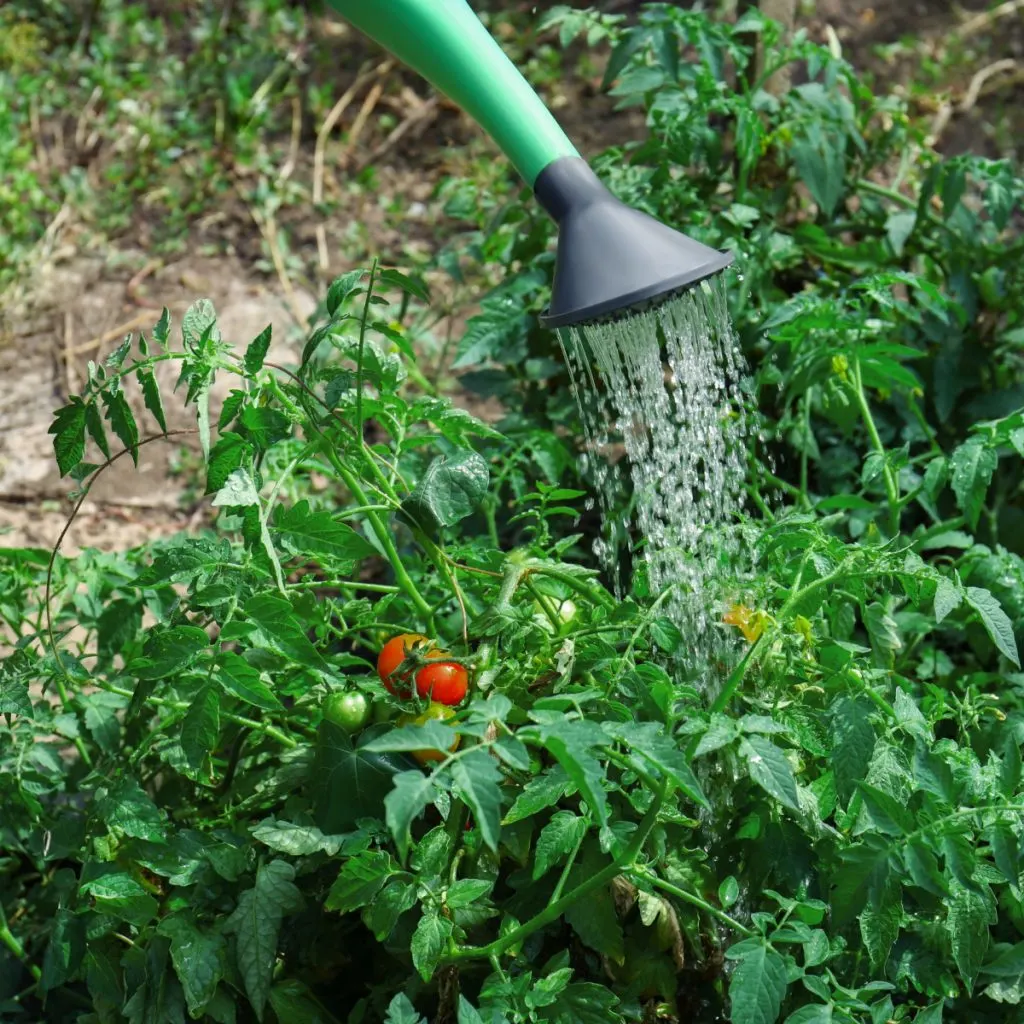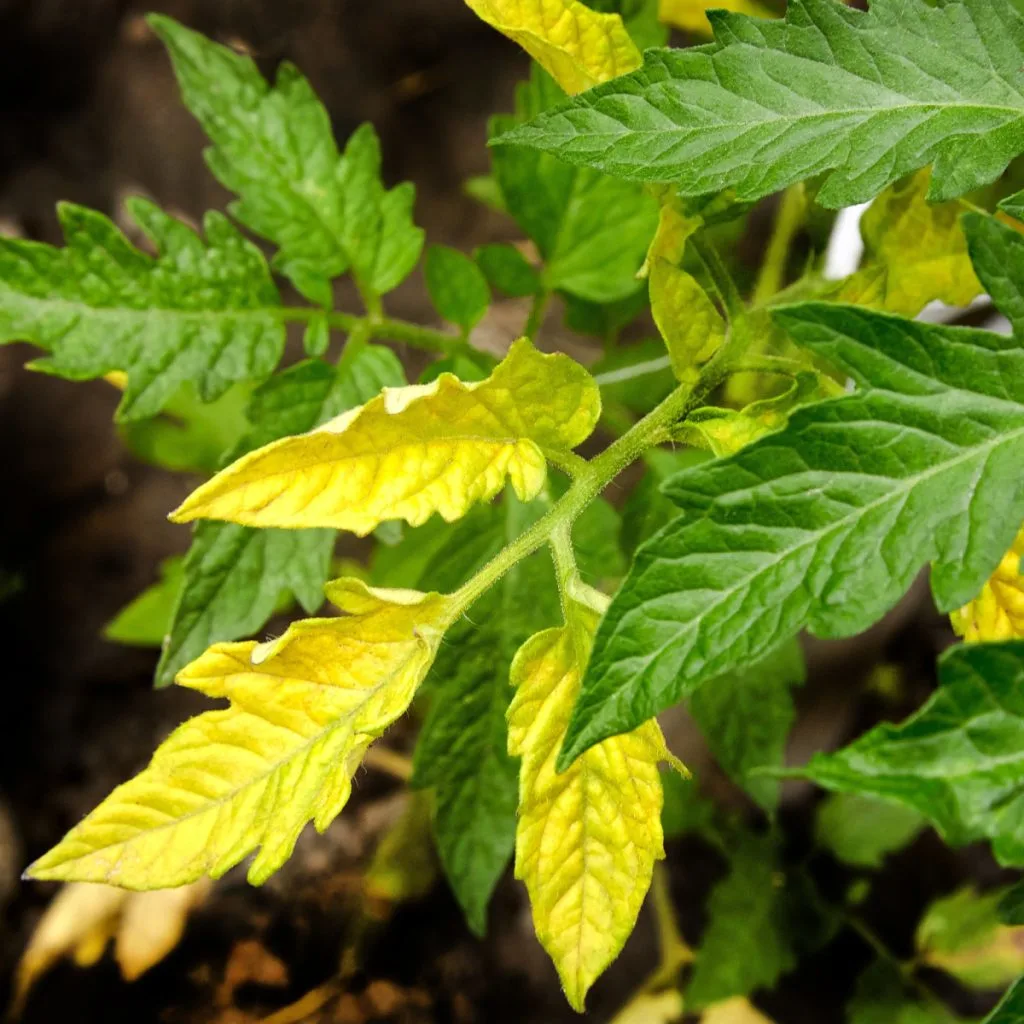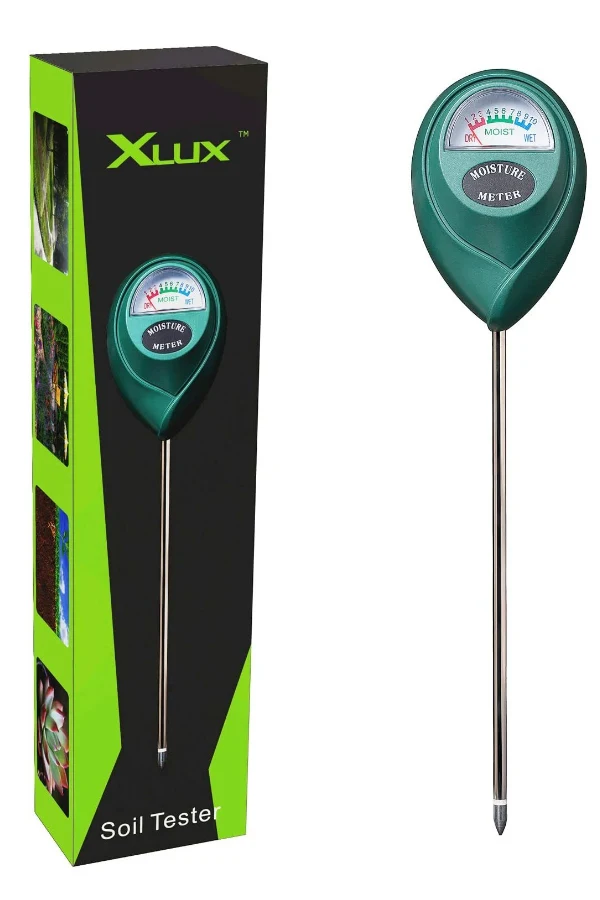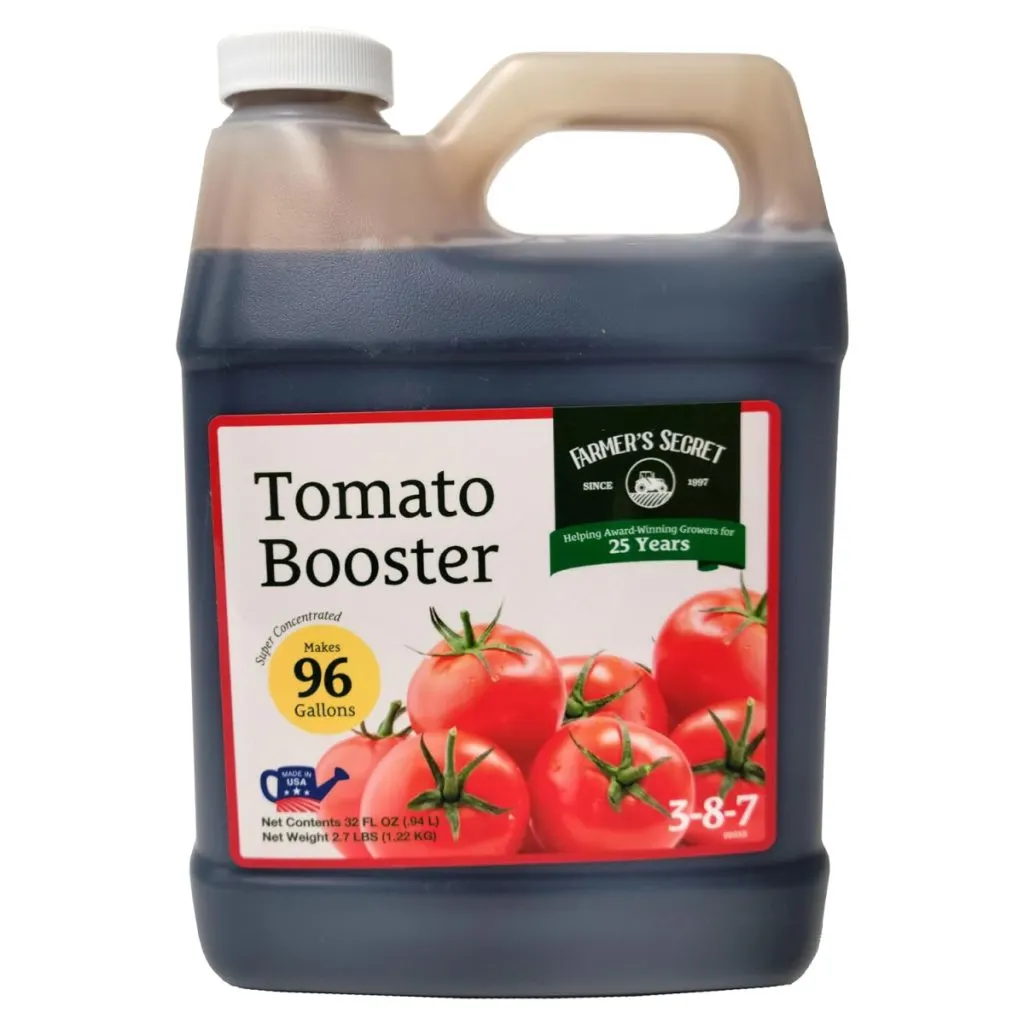Looking to avoid a few costly mistakes that gardeners often make with their tomato plants in the middle of summer?
Even with the best intentions, many gardeners make a few common miscues during the heat of summer that not only hurt the health of their plants – but more importantly – reduce the size and quality of their harvest.
If you’ve ever struggled with yellowing leaves, small or cracked fruit, blossom drop, or just plants that seem to stall out mid-season, there’s a good chance one of these issues could be the cause.

The good news? Each of these problems are easy to avoid once you understand what’s going on and how to fix it. With that in mind, here is a closer look at three of the most frequent mistakes gardeners make with their tomato plants in the summer – and how you can avoid making them in your own garden.
The 3 Biggest Mistakes Gardeners Make With Tomato Plants
#1 Watering Too Shallow – Why Deep Watering Matters
One of the biggest and most common issues gardeners face during the summer is how they water their tomato plants. The hot sun and rising temperatures make it tempting to water your plants every day, especially when the soil looks dry on the surface. But this habit can actually do more harm than good.
When you water lightly each day, the moisture tends to stay near the top inch or two of soil. The water doesn’t reach down to where the roots are growing, and that creates shallow root systems.
Tomato plants then start to depend on getting water from the surface, which dries out quickly in the heat of summer. As a result, the plants become weak, stressed, and more prone to disease and heat damage.

Instead of watering a little each day, it’s far better to water deeply but less often. Deep watering means soaking the soil thoroughly so that the moisture goes down 6 to 8 inches or more.
This helps encourage your tomato plants to send their roots deep into the ground, where they’re protected from the heat and where the soil stays moist longer. Deep roots also help your plants access more nutrients and make them stronger and more drought-resistant overall.
The Best Way To Water Deep
The best way to water deeply is to water slowly at the base of each plant. Using a soaker hose, drip irrigation, or even a simple watering can with a slow pour all work great for this. Try to water every 3 to 5 days instead of every day, depending on the weather.
If it’s extremely hot or your plants are in containers, you may need to water a little more often, but always aim for depth, not just surface moisture.
You can check how deeply the water has soaked in by sticking your finger or a small garden trowel into the soil. If it’s only wet near the top, it’s not deep enough. On the other hand, if the soil is moist several inches down, you’ve hit the right level.
An even better way to know exactly how moist the soil is with an inexpensive soil moisture meter. It can quickly and accurately tell you the moisture level right at the root level. Affiliate Link: XLUX Long Probe Deep Soil Moisture Meter
#2 Using The Wrong Fertilizer
The second major mistake many gardeners make is not fertilizing correctly – or not at all. Tomato plants are what’s known as heavy feeders.
That means they use a lot of nutrients to grow their thick foliage, produce flowers, and then form and ripen fruit. And during the summer, when they’re working the hardest, they need even more energy to keep going strong.
But simply feeding your plants with any old fertilizer won’t get the job done. In fact, using the wrong kind of fertilizer can actually backfire.
Many general-purpose fertilizers have a high amount of nitrogen. While nitrogen is important for leaf growth, too much of it will cause your plants to grow big, bushy foliage at the expense of flowers and fruit. You might get huge tomato plants with lots of leaves, but few blooms and very little fruit production.
The Best Fertilizer To Use For Tomato Plants
What tomato plants really need during the summer are nutrients that help with flowering and fruiting. That means a fertilizer that has more phosphorus and potassium than nitrogen.
When looking at fertilizer labels, you’ll see three numbers listed. These numbers represent the percentage of nitrogen (N), phosphorus (P), and potassium (K). For tomato plants, a fertilizer with a lower first number (nitrogen) and higher second and third numbers (phosphorus and potassium) is best.
Phosphorus helps support strong roots and encourages more flowers, while potassium helps with fruit formation, size, and flavor. A good balance for summer fertilizing is something in the range of double to triple the amount of phosphorus and potassium.
These formulas push the plant to use its energy to grow more blooms and set fruit, instead of just growing more leaves. Affiliate Link: Farmer’s Secret Tomato Booster Fertilizer (32oz) – Super Concentrated.
Using a liquid fertilizer makes a big difference too. Liquid fertilizers are absorbed more quickly than granular types, especially during hot weather when the soil can become dry and hard.
They reach the roots faster and are less likely to cause buildup that can harm the plant. Even better, when diluted to half strength, they can be applied more often without burning the roots.
For best results, feed your plants every 10 to 14 days during the summer with a half-strength dose of liquid fertilizer. Apply it directly to the base of the plant and avoid getting it on the leaves. For more on this, see our article: How To Fertilize Tomato Plants In The Summer.
#3 Stepping On The Soil Near Your Tomato Plants – One Of The Most Common Mistakes Gardeners Make With Tomato Plants
The third mistake is something many gardeners do without realizing the damage it causes: walking or stepping on the soil close to their tomato plants. It might seem harmless, especially when you’re weeding, watering, or harvesting, but repeated foot traffic around the base of your tomato plants can cause serious problems.
Every time you step on the soil near your plants, you compact it. Compacted soil becomes hard and dense, and that can make it difficult for water and air to reach the roots.
Tomato roots need loose, well-draining soil to grow, absorb nutrients, and take in oxygen. When the soil is compacted, water can’t soak in deeply, and the roots can’t grow properly.

This leads to a whole range of issues. Issues that include poor plant health, smaller harvests, and an increased chance of disease. Roots that are under stress from compacted soil are more likely to rot. They are also more likely to suffer in dry spells, and less able to take up the nutrients they need to produce a strong crop.
Avoiding Soil Compaction
To avoid compacting the soil, always try to stay off the area right around your tomato plants. Set up your garden rows with walking paths between them. Use mulch to mark out clear spaces where you can walk without harming the root zones.
If you need to get close to the plants, kneel on a board or stepping stone to spread out your weight and reduce pressure on the soil.
Mulching around the base of your tomato plants can also help protect the soil from compaction. A 4-6 inch layer of straw or grass clippings will keep the soil moist and loose. This will also prevent weeds and keep the roots cool. For more tomato growing tips, check out: How To Ripen The Last Of The Green Tomatoes On Your Plants!
Here’s to avoiding the three biggest mistakes gardeners often make with their tomato plants in the summer. And – to a big harvest of tomatoes this year!
Simple Garden Life
Follow Our Facebook Page For Even More Great Tips! Simple Garden Life Facebook Page
Simple Garden Life is a website dedicated to keeping gardening fun, simple and enjoyable! We publish two new articles each week along with a new garden podcast episode every two weeks. This article may contain affiliate links.


